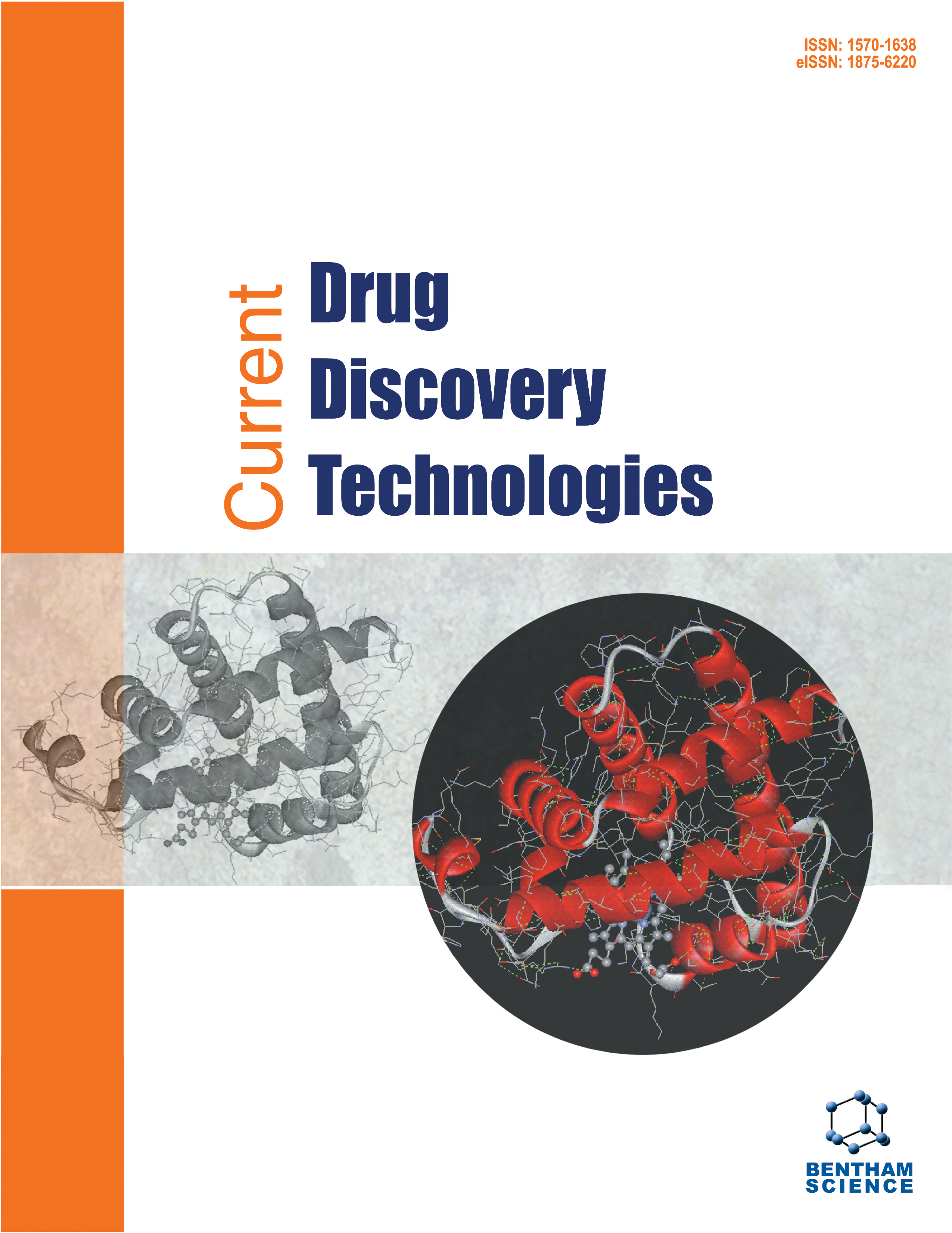- Home
- A-Z Publications
- Current Drug Discovery Technologies
- Previous Issues
- Volume 19, Issue 3, 2022
Current Drug Discovery Technologies - Volume 19, Issue 3, 2022
Volume 19, Issue 3, 2022
-
-
In Vitro and In Vivo Approaches for Screening the Potential of Anticancer Agents: A Review
More LessAuthors: Rakhi Mishra, Prem S. Mishra, Shruti Varshney, Rupa Mazumder and Avijit MazumderBackground: Anticancer drug development is a tedious process, requiring several in vitro, in vivo, and clinical studies. In order to avoid chemical toxicity in animals during an experiment, it is necessary to envisage toxic doses of screened drugs in vivo at different concentrations. Several in vitro and in vivo studies have been reported to discover the management of cancer. Materials and Methods: This study focused on bringi Read More
-
-
-
Targeting G-Quadruplex DNA for Cancer Chemotherapy
More LessAuthors: Sumanta Debbarma and Pratap C. AcharyaThe self-association of DNA formed by Hoogsteen hydrogen bonding comprises several layers of four guanine or G-tetrads or G4s. The distinct feature of G4s, such as the G-tetrads and loops, qualify structure-selective recognition by small molecules and various ligands and can act as potential anticancer therapeutic molecules. The G4 selective ligands can influence gene expression by targeting a nucleic acid structure Read More
-
-
-
In-silico Screening of Phytoconstituents on Wound Healing Targets - Approaches and Current Status
More LessAuthors: Vijaya Mandale, Asha Thomas, Ravindra Wavhale and Sohan ChitlangeOver recent years, there has been tremendous research focused on the effective utilization of natural products in wound management. Natural or herbal products contain several phytoconstituents that may act on various stages in wound healing and thereby provide a multi-targeted approach especially in the treatment of chronic wounds. Currently, attempts have been made to screen the phytoconstituents present in herbs on Read More
-
-
-
Computational Approach to Combat COVID-19 Infection: Emerging Tools for Accelerating Drug Research
More LessBackground: The process of drug discovery and development is expensive, complex, timeconsuming, and risky. There are different techniques involved in the process of drug development, including random screening, computational approaches, molecular manipulation, and serendipitous research. Among these methods, the computational approach is considered an efficient strategy to accelerate and economize the drug Read More
-
-
-
Genus Zanthoxylum as Sources of Drugs for Treatment of Tropical Parasitic Diseases
More LessAuthors: Kunal Patil and Rashmi MallyaThe tropical parasitic infections account for more than 2 billion infections and cause substantial morbidity and mortality, and account for several million deaths every year. Majorly parasitic infections in humans and animals are caused by protozoa and helminths. Chronic infections in the host can cause retardation, impairment of cognitive skills, development in young children and weaken the immune system. The burden is felt Read More
-
-
-
A Systematic Review on Curcumin and Anti-Plasmodium berghei Effects
More LessAuthors: Pegah Shakib, Hamed Kalani, Jeffery Ho, Mehrdad Dolatshah, Sana Amiri and Kourosh CheraghipourBackground: Turmeric (Curcuma longa L.) is a popular spice containing curcumin that is responsible for its therapeutic effects. Curcumin with anti-inflammatory, antioxidant, anti-cancer, and antimicrobial activities has led to a lot of research focusing on it over the years. This systematic review aimed to evaluate research on the anti-Plasmodium berghei activity of curcumin and its derivatives. Methods: Our study was performed Read More
-
-
-
Modulatory Potential of Citrus sinensis and Moringa oleifera Extracts and Epiphytes on Rat Liver Mitochondrial Permeability Transition Pore
More LessBackground: Bioactive agents from medicinal and dietary plants have been reported to modulate the mitochondrial membrane permeability transition pores. Objective: This study investigated the in vitro effects of C. sinensis (CSE) and M. oleifera (MOE) methanol leaf extracts and their epiphytes (CEP and MEP) on mitochondria permeability transition pores. Methods: In vitro antioxidant activities of the extracts were dete Read More
-
Volumes & issues
-
Volume 22 (2025)
-
Volume 21 (2024)
-
Volume 20 (2023)
-
Volume 19 (2022)
-
Volume 18 (2021)
-
Volume 17 (2020)
-
Volume 16 (2019)
-
Volume 15 (2018)
-
Volume 14 (2017)
-
Volume 13 (2016)
-
Volume 12 (2015)
-
Volume 11 (2014)
-
Volume 10 (2013)
-
Volume 9 (2012)
-
Volume 8 (2011)
-
Volume 7 (2010)
-
Volume 6 (2009)
-
Volume 5 (2008)
-
Volume 4 (2007)
-
Volume 3 (2006)
-
Volume 2 (2005)
-
Volume 1 (2004)
Most Read This Month
Article
content/journals/cddt
Journal
10
5
false
en


